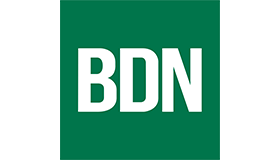Maine had no trouble meeting a 2019 goal of adding 100,000 new heat pumps to homes by 2025, so Gov. Janet Mills unveiled a more aggressive benchmark in July.
But an additional, less-talked-about goal of installing 15,000 heat pumps in low-income households by 2025 has been harder to meet. A review of state data shows Maine progressed about a third of the way to that goal in the last three years.
With 15 months left, the state has plenty of work to do. Still, leaders expressed optimism at reaching the target thanks in large part to another infusion of federal funding to help residents acquire heat pumps, which heat and cool homes using little energy. They typically cost about $4,000 but can save about $1,000 annually compared with fossil fuel-burning heaters.
By mid-2022, the state reported installing just over 5,200 heat pumps in low-income households, compared with the 900 or so installed at the start of the goal-setting process in 2019. An updated total for 2023 will not be available until Maine shares climate goal updates in December, though MaineHousing reported 376 new installations through late July.
“I think we’re doing OK,” MaineHousing Director Dan Brennan said.
Maine could receive up to $51 million in federal funding, much of which will go toward installing more heat pumps in low-income households, including $36 million from the Inflation Reduction Act and a pending proposal for $10 million for low-income manufactured homes.
That should speed up the state’s progress toward meeting the goals, said Michael Stoddard, the executive director of Efficiency Maine, which provides financial assistance for heat pumps and other energy-efficient devices.
“A significant number of Maine’s low-income households are in multifamily buildings,” he said. “A lot of this federal money will focus on them.”
The efforts in Maine dovetail with national initiatives. Mills, a Democrat, was in New York City on Thursday to join her U.S. Climate Alliance co-chair, Washington Gov. Jay Inslee, as well as New York Gov. Kathy Hochul and White House climate czar Ali Zaidi in announcing a new goal of quadrupling the number of heat pumps in U.S. households to 20 million by 2030.
Heat pumps play a key role in Maine’s progress to reaching its statutory goals of reducing greenhouse gas emissions by 45 percent from 1990 levels by 2030 and 80 percent by 2050, and in lessening its heating oil dependence that currently tops the nation. Mills’ new goal is to install 175,000 more heat pumps by 2027.
MaineHousing’s Home Energy Assistance Program helps lower-income homeowners and renters pay for heating costs. To qualify for the program, a single person must make no more than $32,672 annually. The limit is $62,831 for a four-person household.
Efficiency Maine also provides up to $2,000 for the first heat pump and $400 for the second indoor unit installed before the end of this October. The federal Inflation Reduction Act offers up to $2,000 annually as a tax credit for heat pumps. Another $600 credit is available if upgrading an electricity panel to handle the heat pump.
Officials in Maine’s rural counties said they have enough installers ready to add heat pumps in low-income homes if enough money keeps flowing down from the government.
The Aroostook County Action Program helped install 159 heat pumps in qualifying low-income homes in 2022 and is on pace to install 155 this year, Melissa Runshe, the group’s housing program manager, said. The typical installation costs between $3,900 and $4,500. The waiting list is long, with 532 names on it as of Thursday, she said.
“Really the only struggle we have is funding,” Runshe said.




